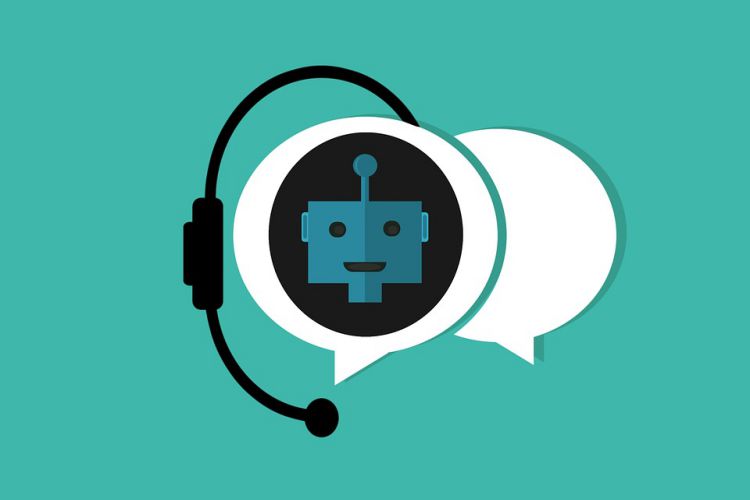 Chatbots are everywhere – whether you realize it or not. For example, when you are looking for a product on Facebook, a window pops up asking if you need assistance. Or perhaps, you are surfing through a website for an answer, and a chat box opens instantly. In all these instances, you are not talking to a human, but a smart chat robot, commonly known as a chatbot.
Chatbots are everywhere – whether you realize it or not. For example, when you are looking for a product on Facebook, a window pops up asking if you need assistance. Or perhaps, you are surfing through a website for an answer, and a chat box opens instantly. In all these instances, you are not talking to a human, but a smart chat robot, commonly known as a chatbot.
Now the question arises, why do businesses have to use them? How can they benefit businesses in different aspects?
In this article, we bring forth everything you need to know about a chatbot. Whether you are a startup or a growing venture, a chatbot will revolutionize your operations effortlessly.
What is a Chatbot?
Chatbots, in brief, are computer programs or software programs that engage in text or voice interactions to simulate human conversation.
Chatbots work by parsing customer input and then scanning their database for articles associated with certain keywords and phrases. Simply put, it works like a keyword-based document retrieval system. For example, a chatbot on a cosmetics website will ask users about their makeup preferences, then recommend products and offers based on their answers.
Which Chatbot is Best for Businesses?
There is no single bot for all businesses. Each comes with a set of unique features and a pricing plan. Depending on your budget and requirements, you can choose a chatbot that fits all your needs. If you are looking for the top chatbots in the market, you can find one that has the best reviews online.
All in all, chatbots can be divided into three types:
- Simple Chatbot: Simple chatbots are task-specific and pose questions based on predetermined options. The customers can choose from the set of options until they get answers to their queries. These are best suited for straightforward commands such as ordering a pizza.
- Smart Chatbot: Smart chatbots enable near-human interaction with customers using artificial intelligence. They understand intent, language, and sentiment and can have free-flowing conversations. They need programming to understand the context of interactions.
- Hybrid Chatbot: A hybrid chatbot is a middle-level ground of both simple and smart extremities. It initializes a chat using a smart AI and tries to clear out the customer’s query as soon and as simply as possible, using the simple chatbot
Advantages of Chatbot for a Business:
Chatbots can be very effective in engaging customers, improving performance, and gaining financial benefits. So let’s dive deeper into a few other ways that a chatbot can benefit your business.
- 24-Hour Presence
A chatbot handles customer support requests at any time, regardless of the customer’s location, eliminating the need to wait until standard business hours. This reduces the workload on customer support staff. Additionally, it does not have issues with the long waiting times as it can answer several inquiries simultaneously.
A chatbot not only works as an SMS assistant but also answers calls during off-hours. Its speech recognition model transcribes the call in real-time. The NLP (Natural Language Processor) classifier then identifies your customer’s issue to provide a customized solution.
- Increased Sales and Revenues
A chatbot can generate revenue in several ways. These include outbound models, which send push messages with different options. For example, a chatbot on a social media app allows users to take specific actions like landing on a web page, sending a message, or making a purchase. The customer actions are then transferred to sales funnels to generate leads and follow-up messages.
Chatbots are also programmed with natural humor so that they sound more human. This makes customers feel more at ease and improve their experience with your business, thus increasing sales.
- Real-Time Assistance
Chatbots create a personalized experience by facilitating direct, one-on-one communication with the audience.
Businesses use ads to reach out to potential customers relevant to their business through Messenger. Chatbots tailor conversations to meet customers’ specific needs. This may generate leads, raise awareness of brands or drive sales.
Users can request more information about your location, business hours, products or services, or schedule appointments. All you have to do is configure your chatbot and link it with your ad. The chatbot’s AI handles the rest.
- Gaining Customer Insights
A chatbot can collect vast amounts of customer data at no additional cost. You don’t need to create and conduct surveys online. An analysis of chatbot activity reveals important information about customers. You can track user flows, identify trends and patterns, and measure engagement and retention.
The analytical data you receive from the chatbot can also evaluate its performance. By tracking the analytics, you can determine if the chatbot can handle different conversations, whether there are any gaps in its flow, and why users abandoned discussions.
- Cost-Effective
Chatbots decrease the overall costs by reducing the number of employees. Automating end-to-end business processes provides a better experience for the customer and the client.
It also reduces the cost of lost opportunities by staying in contact with customers 24/7. They respond to every single message with no waiting time. This increases the chances of converting website visitors into buyers and increasing sales with concurrent chats. Lastly, chatbots can significantly reduce the cost of getting the analytical data by storing it in real-time.
Wrap Up:
Chatbots are transforming the online experience, offering a simpler command-line interface than complex web pages and apps with structured menus. The software is easy to set up, takes little maintenance, and allows you to test different marketing messages for a lower cost. Additionally, it is available in several languages and for multiple platforms, making it ideal for all niches.




